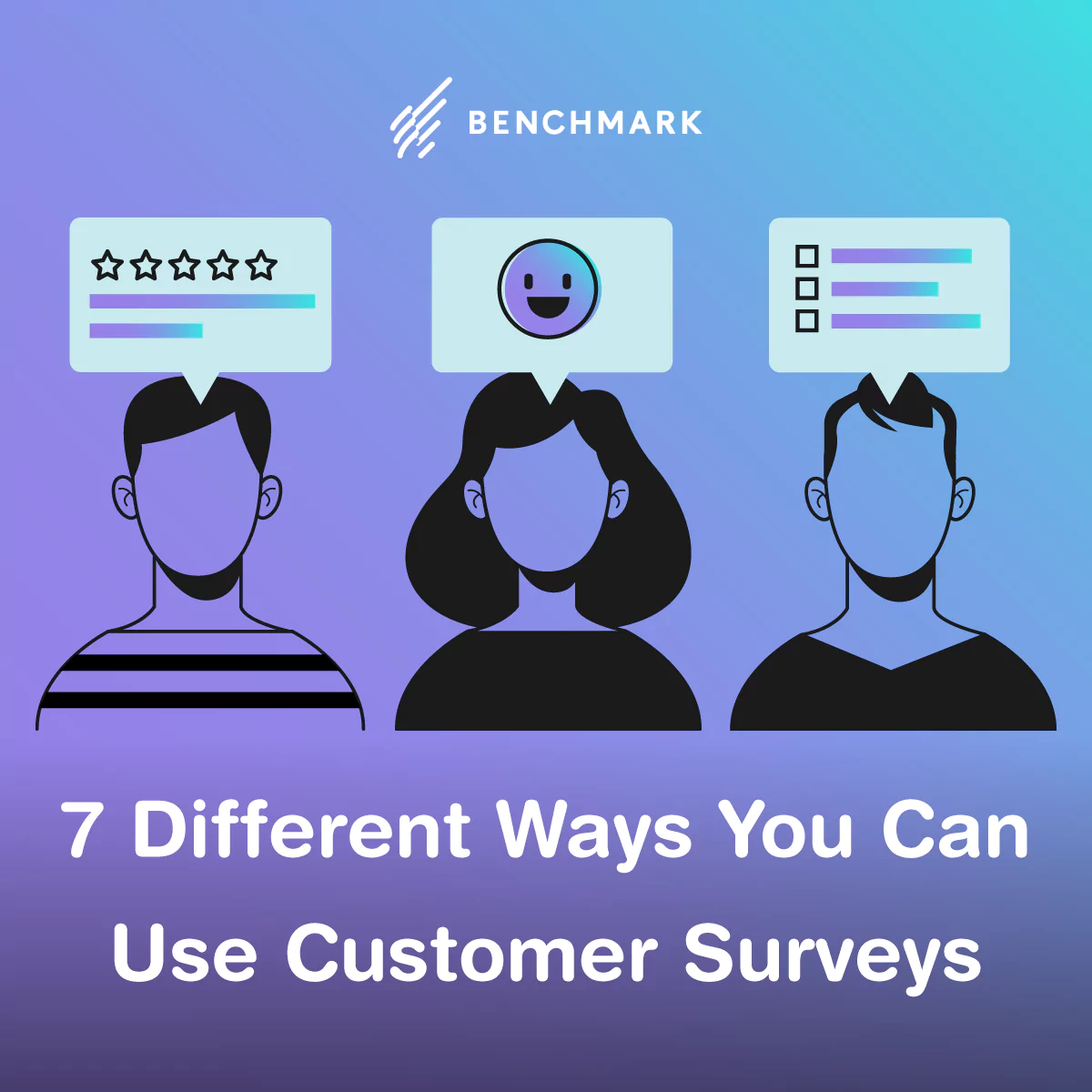
Businesses thrive on customer insights. Our customers are our best resources for helping understand the experience we’re offering, in turn, illustrating what we can do better and how we can gain a competitive edge in our industry. Their insights also help us hone in on exactly what leads are looking for, producing lots of useful data for future pipeline conversions.
In 2019, companies that prioritized and proactively managed their customers’ experiences were three times more likely than their peers to exceed their top business goals. It’s clear that taking customer insights and putting them to work in your policies and strategies can be instrumental in achieving success. And one of the best ways to do that is by email surveys.
There’s so much that a business can do with customer insights, which makes surveying customers a truly invaluable tactic. Here are the various ways that the insights you gather from surveys can help your entire company thrive.

1. Improve Your Customer Service Tactics
Customer surveys are a function of great customer service on their own since they show that you’re listening and that you value input. They also help to spur on larger service improvements, with opportunities to learn more about how to increase your customer engagement and what they think is lacking in how your customer service process currently operates.
Poll your customers after they close out a ticket with your customer service team. Did they have a good experience? Was their problem taken care of quickly and efficiently? If the answer to either of these questions is “no,” you’ll know you have some work to do on your tactics.
2. Streamline Your Onboarding Process
You want your customers to feel like the onboarding process is totally seamless. And to do that, you need to know what it looks like from their perspective. Surveying customers on why they decided to come on board in the first place will help clue you in on the benefits your product or service brings to the table so you can amplify those benefits when you facilitate their onboard. Similarly, making note of what they found challenging gives you a chance to address — and remove — any hurdles from the process.
How you bring a customer onboard plays a crucial role in the success of your partnership. If things get off on the wrong foot, or if your customers are confused and overwhelmed right out the gate, that will leave them questioning why they partner with you in the first place.
3. Offer More Targeted Services
Is your service line appropriately meeting the needs of your customers? There may be additional things that you could be doing to offer a more impactful experience. If your team isn’t sure what you could be providing that would give you more of a competitive edge and bring more value to your users, just ask.
You can use quarterly or yearly surveys in your email marketing to identify any gaps in your service line offerings, then take that insight and turn it around into actionable changes. Nothing motivates a team like knowing your customers are specifically asking for something, so use your survey feedback as the main motivating factor and determine any additional features that may be beneficial along the way.
4. Inform Product Roll-Outs
How you roll-out a new product is almost as important as the product itself. Customer feedback can help you maximize the design and function of any new product you come out with. It can also help you accurately market your product to the people it will be most useful for.
You can ask your customers questions about your newest products and what they liked about how you released them. Make sure to also ask them what they didn’t like or if any miscommunication or issues during the roll-out affected their impression of the product and your company. Knowing this information can prepare your team adequately for the next roll-out and help you establish any additional steps to increase efficiency. Having more impactful products and more seamless launches will contribute to your business’s overall growth and keep your customers happy.
5. Optimize Your Content Marketing Strategy
Your content will only be successful if it’s able to connect with your audience and address the real needs and questions they have daily. Instead of trying to read your leads’ minds to determine what content they are looking for, go to your customers to learn what questions, interests, and challenges are at the heart of their needs, and then work what you learn into your content strategy.
Once you create and publish this content, you can share it with them and show them that their feedback was carefully considered and used to inspire change. They’ll love that you took them seriously, that they had a hand in improving your strategy, and that they now have a great resource that addresses their specific needs. You’ll have a much better chance of creating content that converts.
6. Prioritize Your Marketing Budget
Small, medium, or large, all businesses only have a finite marketing budget to work with. It pays to be smart about where you invest your marketing spending, and customer surveys are one of the key ways to figure out what you need to know to correctly prioritize your funds.
Gather insights that can help you determine what’s most important to your leads and customers, where your customers are engaging with marketing, and what markets you have the most success with. All of that will show you where to focus your spending so you can stretch every dollar as far as it will go.
7. Make Smarter Partnership Decisions
Co-partnerships are a great way to increase your reach potential and get in front of new audiences. In deciding who to partner with, though, you want to be sure that you choose a brand relevant to the leads you’re aiming for, and customer surveys can help you do that. Poll customers on what other brands they engage with and where they go for certain types of information. With those answers in hand, you can then target those brands that stand out as future valuable potential partners.
Tips for a Successful Customer Survey
Surveys that are short, to the point, and as clear as possible will result in higher and more accurate response rates.
- The length of your survey should be short enough that it takes the average user five minutes or less to complete. This can be achieved with about ten questions or less, usually.
- Before you create your survey, be sure you have given thought to what your objectives are. Knowing what you want to achieve will keep you focused. This will help prevent unnecessary or irrelevant questions, which could frustrate or annoy your respondents and cause them to abandon your survey prior to completing it.
- Questions should not be misleading, confusing, or contain a double negative if you want to receive good results. Users will be more inclined to answer truthfully if they feel comfortable with what they are being asked.
- Consider creating multiple surveys if you need to cover more than one or two topics.
- The success of your survey depends entirely on how active your subscribers are with your campaigns. Generally speaking, an email open rate of 15-20% is considered “good.” However, not everyone who will open your email will participate in your survey. Therefore, you can expect the percentage of subscribers who respond to the survey to be even less than that.
- The best way to gauge the success of your surveys is to monitor the reports and watch for trends. If you notice one survey had more respondents than other surveys, determine the different factors and replicate them in future surveys to achieve similar results. Take into consideration a few suggestions to increase your survey respondents and pay attention to your reports to help improve your results over time.
Be sure to back up your surveys with strategy. Start with the specifics of what you want to learn and achieve through customer insights, then plan out what kinds of surveys will get you there. The result will be a better way of doing business — and an overall better customer experience.



